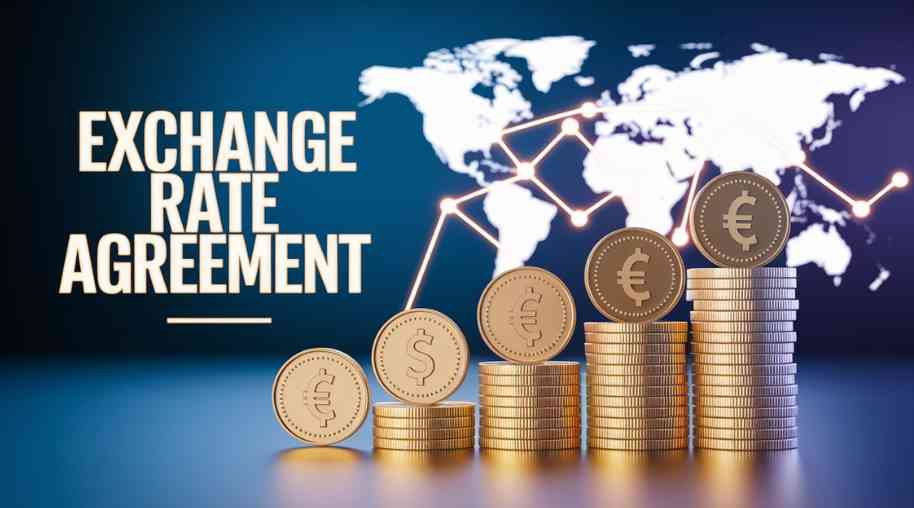ERA Full Form-Exchange Rate Agreement
by Shashi Gaherwar
0 2071
Exchange Rate Agreement: Definition, Importance, and Impact on Global Trade
An Exchange Rate Agreement is a formal arrangement between countries or financial institutions to regulate currency exchange rates. These agreements help stabilize international trade, control inflation, and ensure economic stability. Exchange rate policies influence everything from global trade to foreign investments and economic growth.

This article explores the concept of exchange rate agreements, their types, importance, and impact on international markets.
What is an Exchange Rate Agreement?
An Exchange Rate Agreement is a policy or formal agreement between countries or central banks to control the exchange rate of their respective currencies. These agreements determine how currencies are valued against each other and play a critical role in trade relations, financial stability, and investment strategies.
Types of Exchange Rate Agreements
- Fixed Exchange Rate System
Under a fixed exchange rate system, a country pegs its currency to another currency, a basket of currencies, or a commodity like gold. The central bank intervenes in the foreign exchange market to maintain the exchange rate at the agreed level.- The Gold Standard (historical system where currencies were tied to gold reserves).
- The Bretton Woods System (post-World War II agreement where major currencies were pegged to the US dollar).
- Countries like Hong Kong peg their currency to the US dollar to maintain stability.
- Floating Exchange Rate System
In a floating exchange rate system, the currency value is determined by market forces such as supply and demand. Central banks do not directly interfere but may implement monetary policies to influence currency fluctuations.- The US dollar (USD), Euro (EUR), and British pound (GBP) operate under a floating exchange rate system.
- Countries with strong economies prefer floating rates to allow flexibility in monetary policy.
- Managed Float or Hybrid System
A managed float system, also known as a dirty float, allows currency value to fluctuate but with occasional government or central bank interventions to prevent extreme volatility.- The Chinese Yuan (CNY) follows a managed float system where the People's Bank of China influences exchange rates while allowing limited market-driven fluctuations.
- Many developing countries adopt this system to balance stability with market responsiveness.
Importance of Exchange Rate Agreements
- Currency Stability
Exchange rate agreements help stabilize currency values, reducing the risk of extreme fluctuations that could impact businesses, investors, and consumers. - Facilitating International Trade
Stable exchange rates encourage international trade by reducing uncertainty in currency conversion costs and protecting exporters and importers from unexpected losses. - Controlling Inflation
Countries with weak currencies use exchange rate agreements to control inflation by pegging their currency to a stable foreign currency like the US dollar. - Attracting Foreign Investment
A well-regulated exchange rate system creates confidence among investors, encouraging foreign direct investment (FDI) and capital inflows. - Preventing Currency Wars
Agreements between countries prevent competitive devaluations, where nations deliberately lower their currency value to gain an advantage in exports.
Challenges of Exchange Rate Agreements
- Loss of Monetary Policy Independence
Countries with fixed exchange rates may struggle to implement independent monetary policies, as they must align with the currency they are pegged to. - Risk of Economic Imbalance
If a currency is artificially overvalued or undervalued, it can lead to trade imbalances, inflation, or financial crises. - Speculative Attacks
Fixed exchange rate systems are vulnerable to speculative currency attacks, where investors bet against a currency, forcing devaluations and economic instability.
Case Study: The European Exchange Rate Mechanism (ERM)
The European Exchange Rate Mechanism (ERM) was an exchange rate agreement designed to stabilize European currencies before the introduction of the euro. Countries pegged their currencies to a central exchange rate, reducing fluctuations and preparing for a common currency.
However, in 1992, the British pound faced extreme pressure, leading to Black Wednesday, when the UK withdrew from the ERM due to unsustainable economic conditions.
Future of Exchange Rate Agreements
With the rise of digital currencies and economic globalization, exchange rate agreements continue to evolve. Many experts predict:
- Greater currency cooperation among major economies to prevent financial crises.
- Introduction of digital currency-backed exchange rate agreements to streamline cross-border transactions.
- Flexible exchange rate mechanisms to balance stability and market-driven valuations.
An Exchange Rate Agreement is crucial for maintaining global economic stability, ensuring fair trade, and attracting investment. Whether fixed, floating, or managed, exchange rate policies shape financial markets and influence national economies. As global trade and digital transactions continue to grow, exchange rate agreements will remain an essential tool for economic stability and growth.
Further Learning Resources
If you’re passionate about building a successful blogging website, check out this helpful guide at Coding Tag – How to Start a Successful Blog. It offers practical steps and expert tips to kickstart your blogging journey!
For dedicated UPSC exam preparation, we highly recommend visiting www.iasmania.com. It offers well-structured resources, current affairs, and subject-wise notes tailored specifically for aspirants. Start your journey today!

Share:








Comments
Waiting for your comments